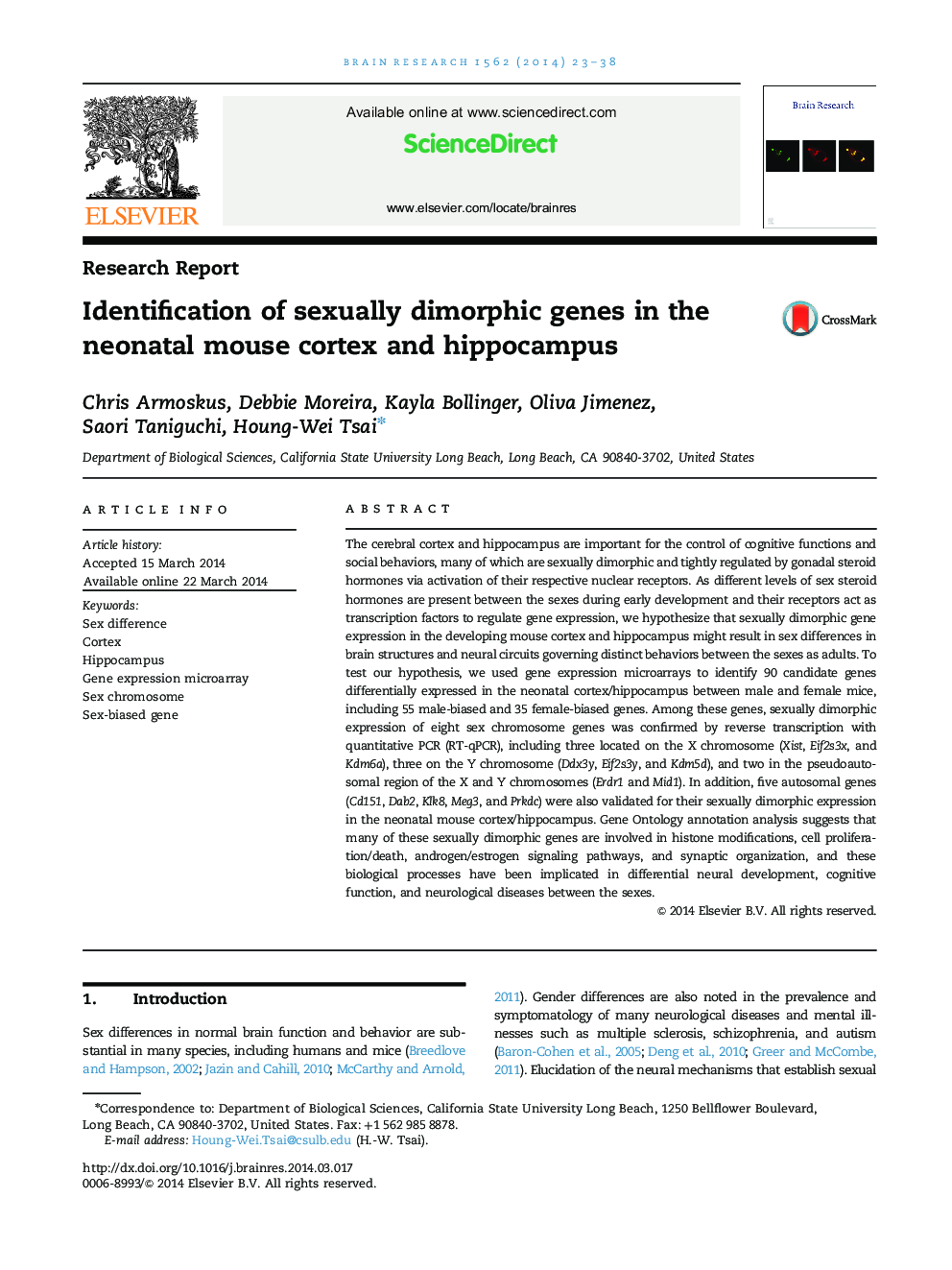| کد مقاله | کد نشریه | سال انتشار | مقاله انگلیسی | نسخه تمام متن |
|---|---|---|---|---|
| 4324296 | 1613877 | 2014 | 16 صفحه PDF | دانلود رایگان |
• Microarray analysis identified 90 sex-biased genes in the mouse cortex/hippocampus.
• Three Y chromosome genes, Ddx3y, Eif2s3y, and Kdm5d, show male-specific expression.
• Xist, Eif2s3x, and Kdm6a are female-based, X-linked genes in the neonatal brain.
• Expression of two pseudoautosomal genes, Erdr1 and Mid1, is female-biased.
• Cd151, Dab2, Klk8, Meg3, and Prkdc are novel sexually dimorphic autosomal genes.
The cerebral cortex and hippocampus are important for the control of cognitive functions and social behaviors, many of which are sexually dimorphic and tightly regulated by gonadal steroid hormones via activation of their respective nuclear receptors. As different levels of sex steroid hormones are present between the sexes during early development and their receptors act as transcription factors to regulate gene expression, we hypothesize that sexually dimorphic gene expression in the developing mouse cortex and hippocampus might result in sex differences in brain structures and neural circuits governing distinct behaviors between the sexes as adults. To test our hypothesis, we used gene expression microarrays to identify 90 candidate genes differentially expressed in the neonatal cortex/hippocampus between male and female mice, including 55 male-biased and 35 female-biased genes. Among these genes, sexually dimorphic expression of eight sex chromosome genes was confirmed by reverse transcription with quantitative PCR (RT-qPCR), including three located on the X chromosome (Xist, Eif2s3x, and Kdm6a), three on the Y chromosome (Ddx3y, Eif2s3y, and Kdm5d), and two in the pseudoautosomal region of the X and Y chromosomes (Erdr1 and Mid1). In addition, five autosomal genes (Cd151, Dab2, Klk8, Meg3, and Prkdc) were also validated for their sexually dimorphic expression in the neonatal mouse cortex/hippocampus. Gene Ontology annotation analysis suggests that many of these sexually dimorphic genes are involved in histone modifications, cell proliferation/death, androgen/estrogen signaling pathways, and synaptic organization, and these biological processes have been implicated in differential neural development, cognitive function, and neurological diseases between the sexes.
Journal: Brain Research - Volume 1562, 8 May 2014, Pages 23–38
